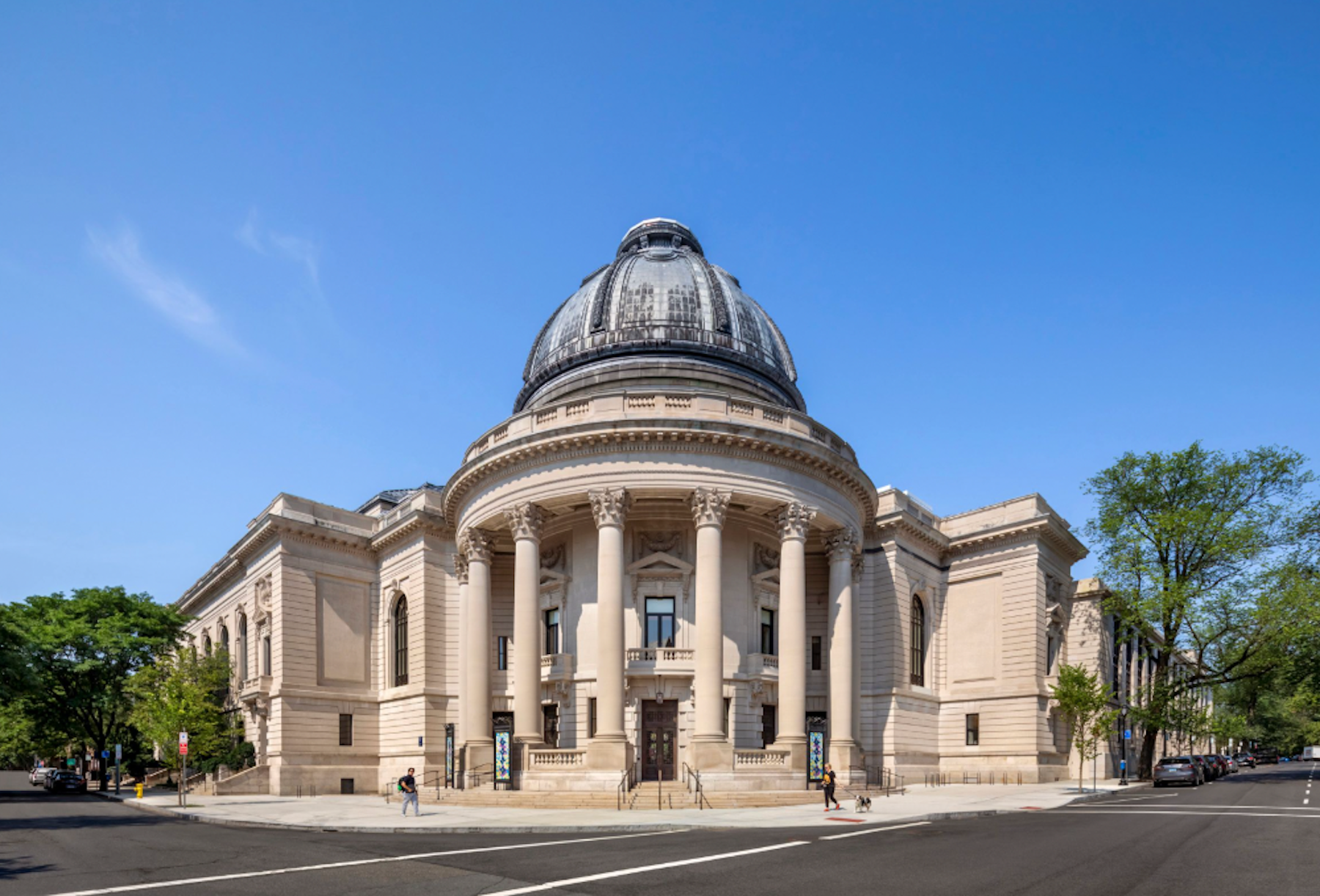Robert A.M. Stern Architects (RAMSA) has unveiled the design of their restoration of the Schwarzman Center at Yale University, which includes dining spaces, a bar, and a food shop. The renewed 123,000-sf center will consist of many features to promote social life on campus.
The transformation of the Schwarzman Center was led by the RAMSA team, and includes historical preservations and the design of new additions.
“The project creates a new campus center designed to connect students, faculty, alumni, and visitors through dining and events,” says Melissa DelVecchio, Partner at RAMSA.
Combining Historic Preservation With Modern Technology
The actual physical expression of the building represents RAMSA’s and the university’s efforts to combine historic preservation, modern technology, and social space. RAMSA’s preservation efforts focused specifically on the Commons, Memorial Hall spaces, War Memorial spaces, the President’s Room, and the Dome Room.
The team removed one-story underground moat space along Grove Street and built a three-storey addition, which was inspired by the original proposal from Carrère & Hastings that detailed an addition to the building’s original construction about 120 years ago. An underground addition was also added and the new Hewitt Plaza was created.
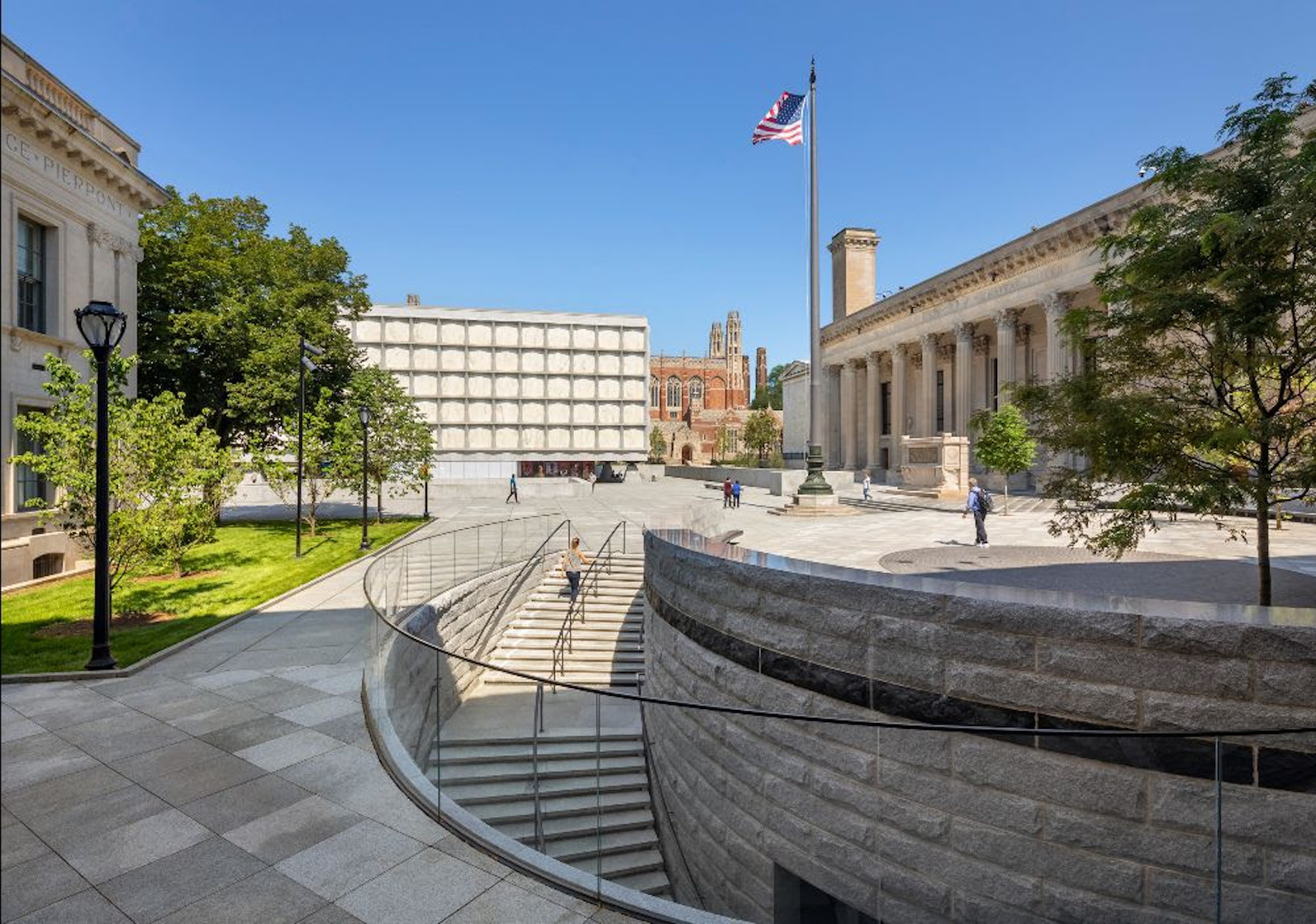
Recreating The Commons
The 66-ft-high dining hall, the Commons was deeply cleaned and preserved after about a century’s worth of smoke and grime. The foundation in this portion was found to be severely deteriorated. As a result, the team decided to dig up and rebuild the foundation.
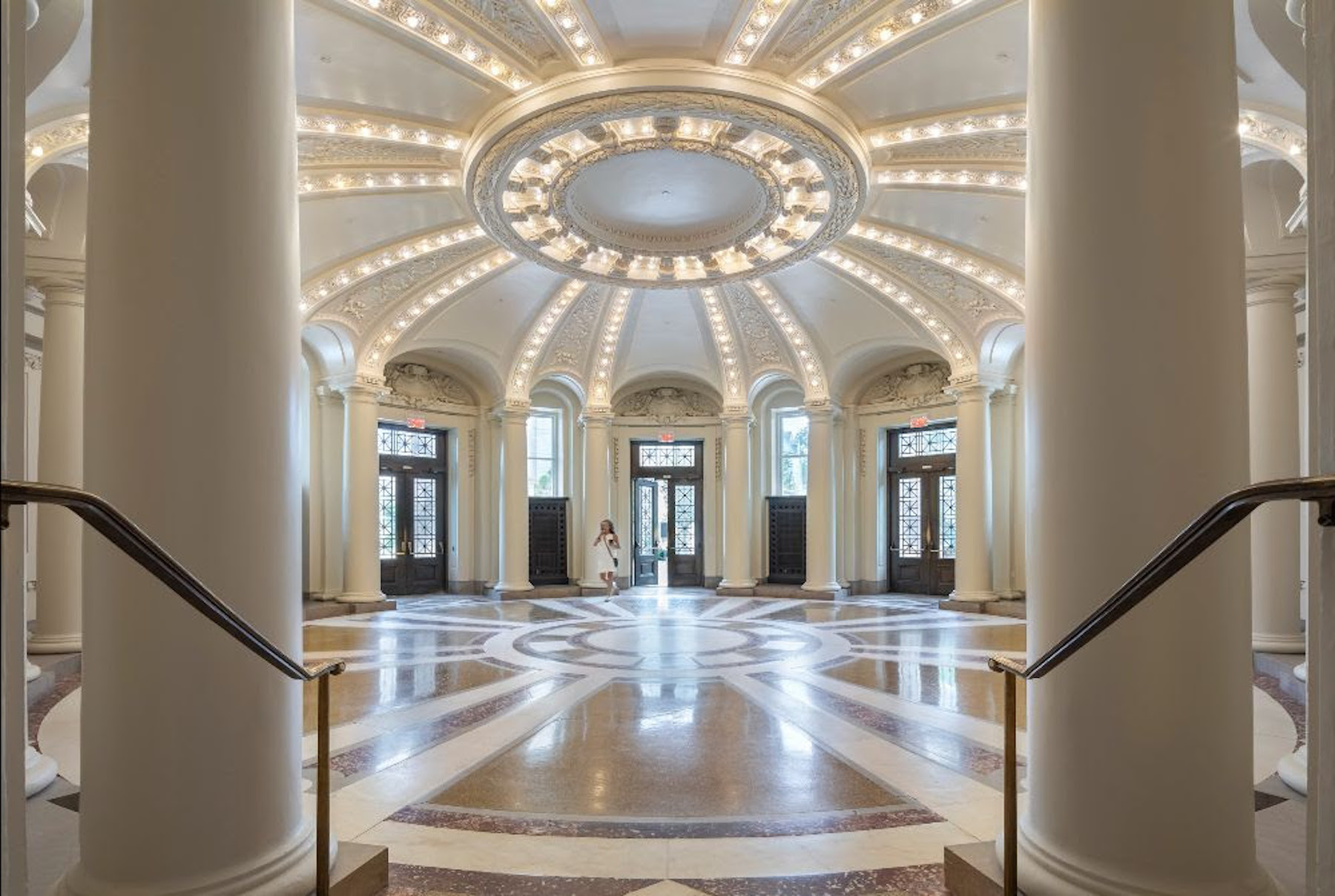
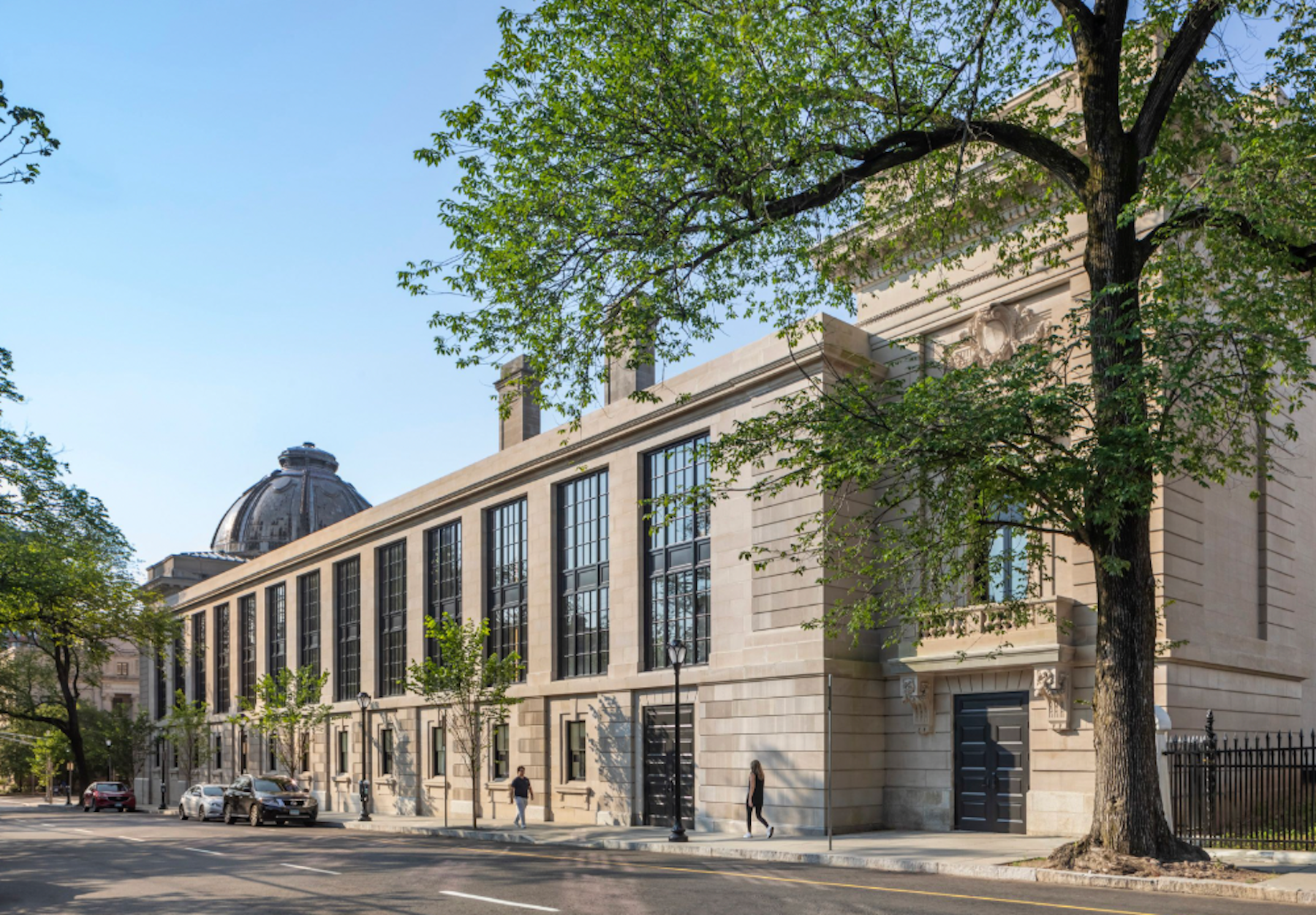
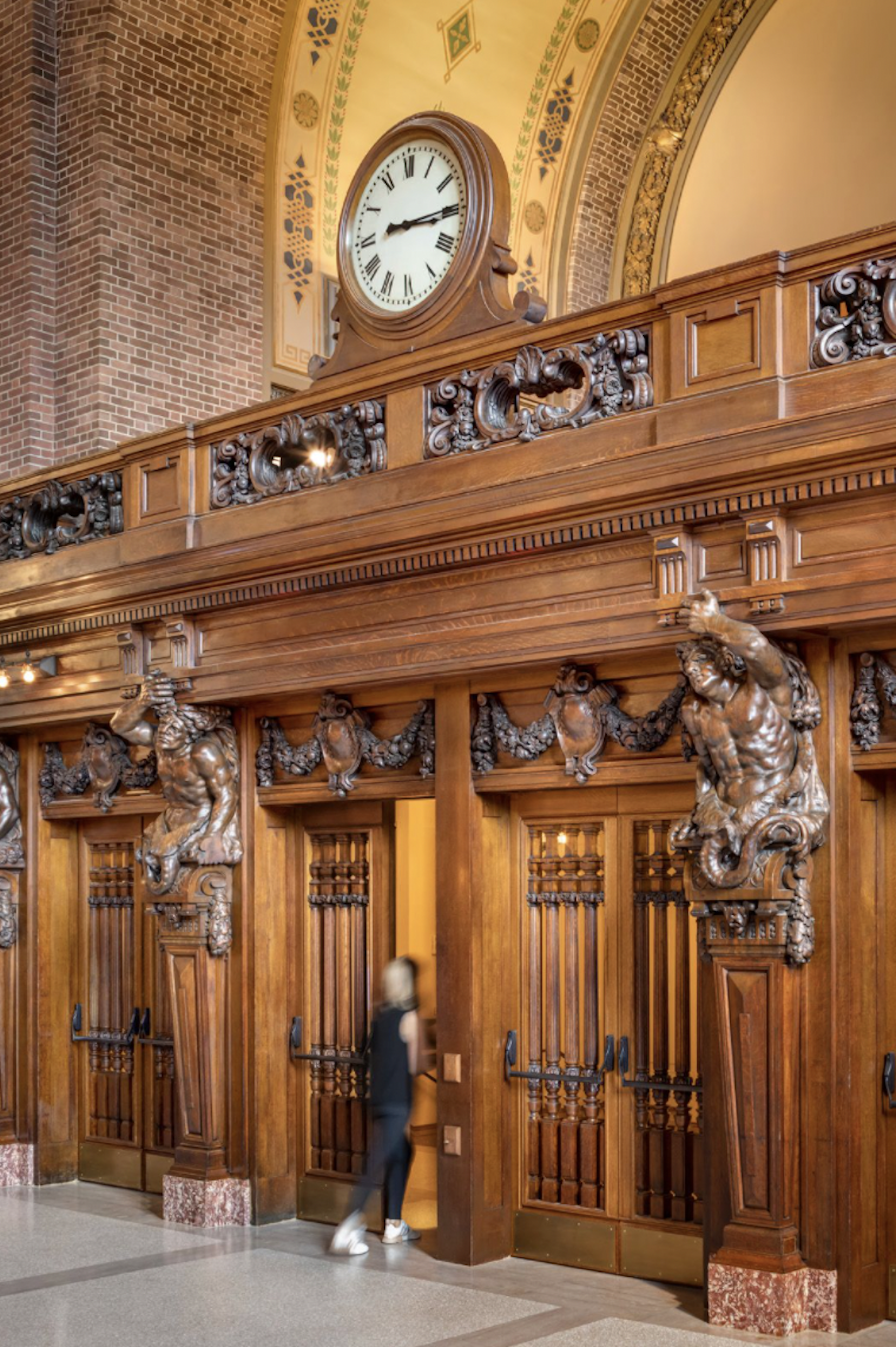
Other Dining And Performance Spaces:
- A casual dining space with a stage, backstage area, and partition
- Flexible performance space, and doubles as a space for masterclasses, events and lectures
- A bar occupying the former food storage space under the Rotunda
- The Bow Wow-food shop
- Renovated and designed to allow for important events hosted in the Yale calendar
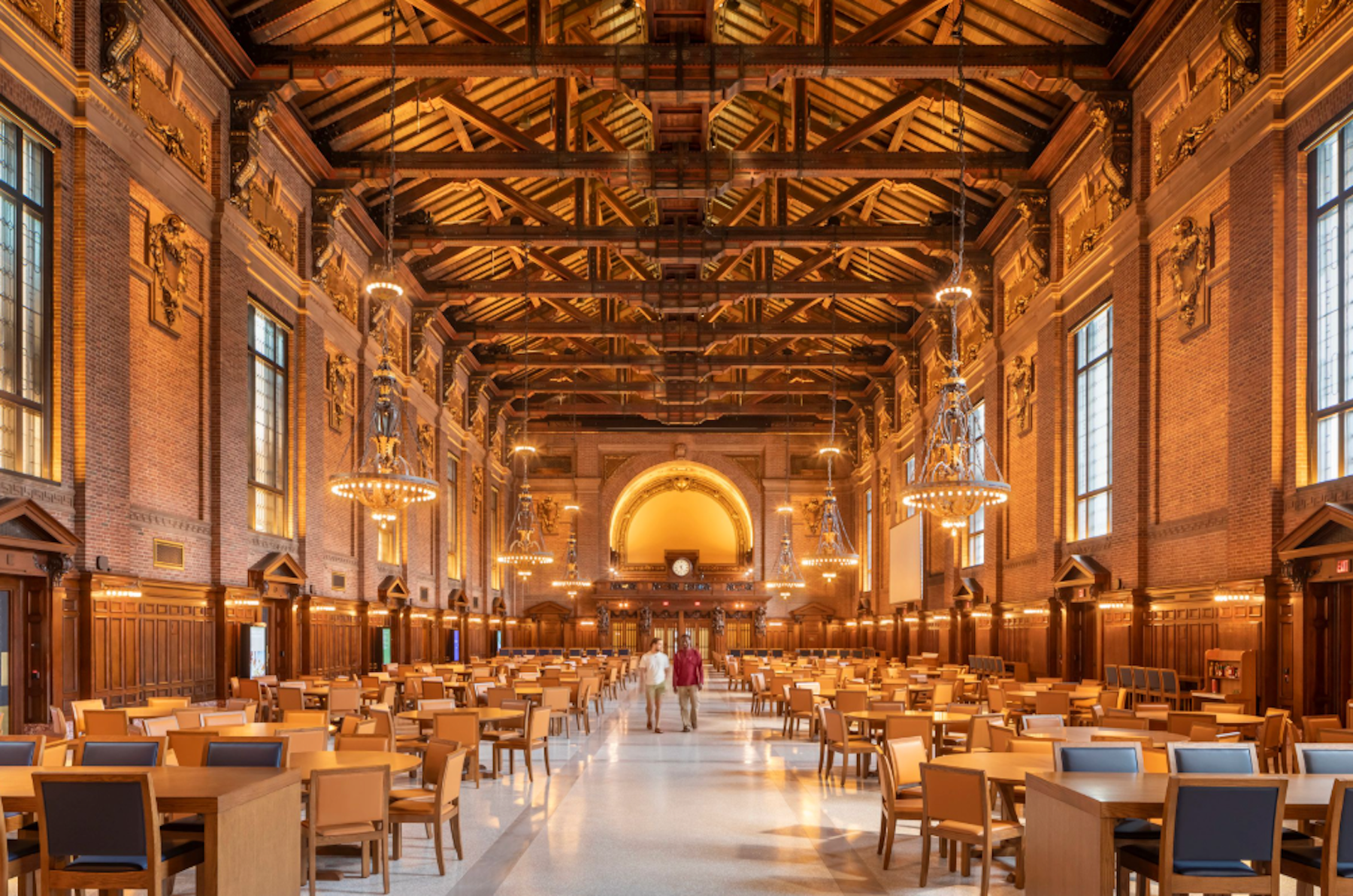
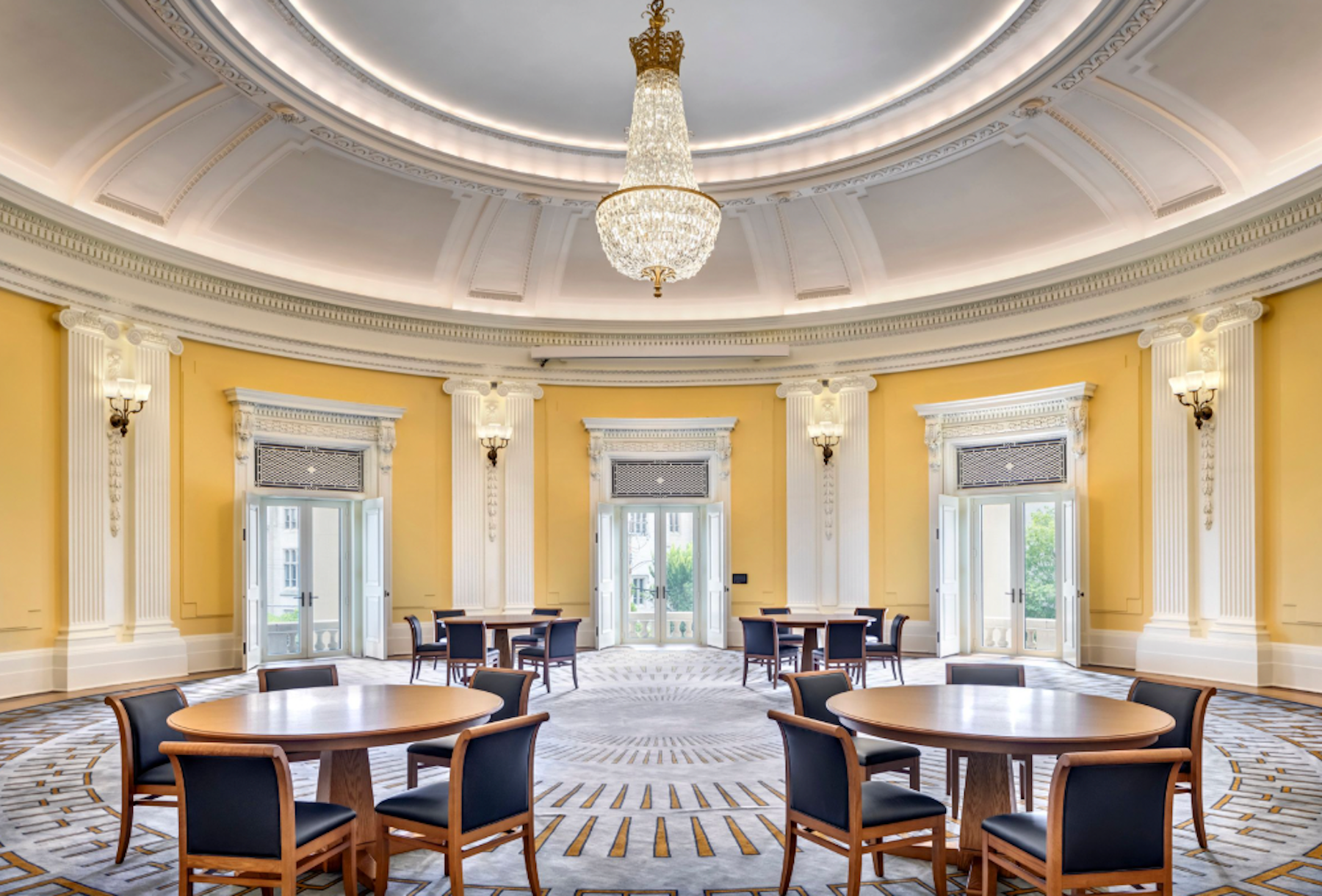
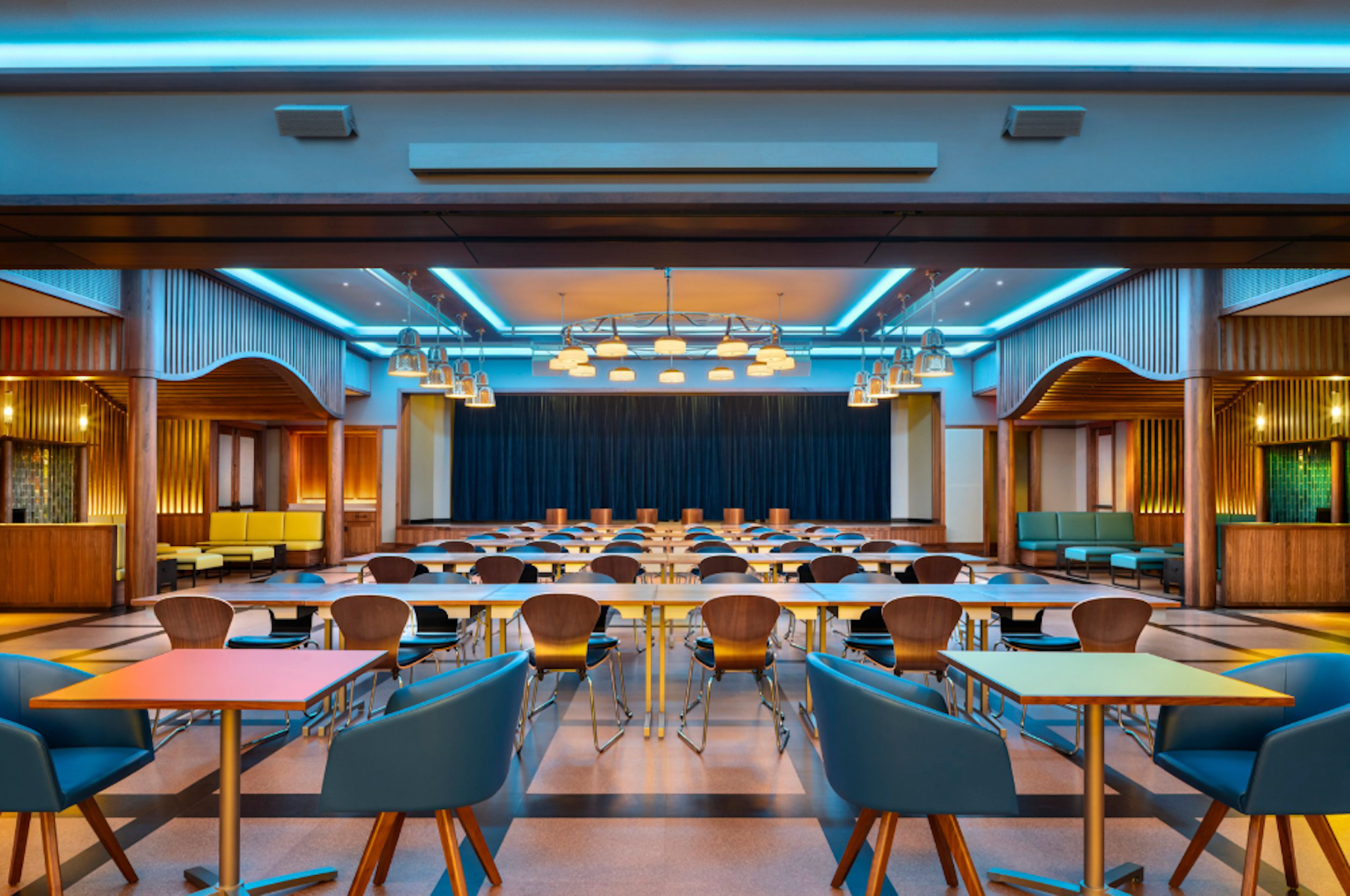
Building Team
Architect of Record: Robert A.M. Stern Architects
Structural Engineer: Robert Silman Associates
MEP Engineer: AKF Group, LLC
Civil Engineer: Langan
Construction Manager: Dimeo Construction Company
Project Statement
Robert A.M. Stern Architects (RAMSA) unveils the design of their renovation and restoration of the Schwarzman Center at Yale University. Located in the Bicentennial Building’s north wing in the heart of Yale University’s campus, the centre recently opened its doors in fall of 2021 after a significant overhaul of the building, which began in 2017.
Yale University engaged renowned architecture firm, Robert A.M. Stern Architects, to lead the transformation of the Schwarzman Center, including the historical preservation and the design of the new additions. The RAMSA team, led by Partners Graham Wyatt, Melissa DelVecchio and Jennifer Stone, worked with an advisory board consisting of prominent individuals in the arts world, creating connections for Yale and the arts community to help sustain programming at the Schwarzman Center. Before the building closed for construction, a series of preview events were held to highlight future possible events in the renovated building, including a hackathon, a dinner presentation on sustainability, and a presentation on Prince and David Bowie’s contributions to the musical world.
“It’s been an honor to work with Yale University to restore and reinvent Yale’s Bicentennial Buildings, creating a new campus center that connects students, faculty, staff, alumni and visitors for the first time ever through dining and arts events. The preservation of these important historic spaces -- at the heart of the Yale experience -- along with new additions that support arts and cultural programming, will enrich student life, building new bridges across Yale’s community,” says Melissa DelVecchio, Partner at RAMSA. "The flexible and technologically-advanced spaces further Yale’s values – promoting cross-disciplinary collaboration, fostering a sense of belonging, and elevating the importance of wellness. We look forward to seeing Yale’s vibrant culture come to life at the Schwarzman Center."
As one of the first buildings built by Yale, its original purpose was to unite students from Yale College and the Sheffield Scientific School. As Yale grew and expanded, the intellectual and social focus of the student body grew increasingly disconnected. Today, the renovated Schwarzman Center achieves a multitude of goals: bringing Yale students together as one unit; serving as a hub of intellectual and student life; encouraging socialization through dining, events and performances; and fostering relationships among the wider Yale community.
The idea for a new campus center came about thanks to a study conducted by Yale, which indicated a high level of student support. In addition, there was an urgent need to renovate the Schwarzman Center; the floors in the Commons – the University’s historic dining hall – were also falling into severe disrepair as the original cinder fill terrazzo floor was structurally unsound and could no longer bear the weight of a dining hall. The Schwarzman Center renovation was made possible thanks to Blackstone CEO Stephen Schwarzman, a Yale graduate, who donated over $100 million to the project, both for the building and for support programs.
The building’s physical expression represents the university’s mission of combining historic preservation with modern technology and increased social space. RAMSA’s preservation efforts focused on the Commons, all the spaces in Memorial Hall, including the war memorial – which inspired Maya Lin’s design for the Vietnam Veteran’s memorial – the President’s Room, as well as the Dome Room, which was a yearbook office for 30 years.
For the exterior, in keeping with the design team’s goal of carving out new programmatic spaces, the team removed the one-storey underground moat space along Grove Street and built a three-storey addition, which was inspired by the original proposal from Carrère & Hastings that detailed an addition to the building’s original construction just a few years after its completion. An underground addition was also added and the new Hewitt Plaza was created.
The RAMSA team paid particular attention to details in order to honor the history and traditions of the Center while carrying it forward into the future. This includes the warm wood of the Commons which combines the traditional Yale aesthetic with modern detailing. The remaining marks on the brick after cleaning created a patina representing hundreds of years as an active university. All historic roof paneling was maintained and lighting fixtures were restored, as was the decorative painting on the wooden trusses. In Memorial Hall, asbestos was removed from the President’s Room and classical detailing was reinstated, and lighting was fixed to enhance accessibility for dining and catering. In the Dome Room, old plasterwork was replicated with molding.
This renovation addressed many accessibility issues in the historic building. A new ramp was added in the gallery to create accessible connections to the outdoor Hewitt Plaza. In addition, the design team added two sets of public elevators to the Commons space, which became the main core of accessibility for the building.
A crowning achievement was the ambitious renovation of the 66-ft-high Commons, which was largely preserved and cleaned of a century’s worth of smoke and grime. The foundation, which had fallen into severe disrepair, was also dug up and lowered 30 inches to address the damage. This also allowed for new programming space to be created while ensuring structural soundness.
The Commons was also successfully optimized for performance. As it had previously relied on people coming in and out for heating and cooling, it was updated with a new, hidden, performance-ready HVAC system. The team also added targeted lighting, integrated projection and blackout shades.
The programming supported the campus’ mission by expanding dining and performance spaces. The team introduced the Underground, a casual dining space with a stage, backstage area, and partition. The Dome Room is another flexible performance space, and doubles as a space for masterclasses, events and lectures. Other new casual dining options include the Well, a bar occupying the former food storage space under the Rotunda and the Bow-Wow, a new food shop. The President’s Room was also entirely renovated and designed to allow for important events hosted in the Yale calendar.
Client: Yale University
Completed: 2020
Lead Architects: Graham Wyatt, Melissa DelVecchio, Jennifer Stone
Photography: Francis Dzikowski/OTTO
Size: 123,000 sq. ft.
Related Stories
| Feb 23, 2011
The library is dead, long live the library
The Society for College and University Planning asked its members to voice their thoughts on the possible death of academic libraries. And many did. The good news? It's not all bad news. A summary of their members' comments appears on the SCUP blog.
| Feb 11, 2011
Sustainable features on the bill for dual-building performing arts center at Soka University of America
The $73 million Soka University of America’s new performing arts center and academic complex recently opened on the school’s Aliso Viejo, Calif., campus. McCarthy Building Companies and Zimmer Gunsul Frasca Architects collaborated on the two-building project. One is a three-story, 47,836-sf facility with a grand reception lobby, a 1,200-seat auditorium, and supports spaces. The other is a four-story, 48,974-sf facility with 11 classrooms, 29 faculty offices, a 150-seat black box theater, rehearsal/dance studio, and support spaces. The project, which has a green roof, solar panels, operable windows, and sun-shading devices, is going for LEED Silver.
| Feb 11, 2011
Research facility separates but also connects lab spaces
California State University, Northridge, consolidated its graduate and undergraduate biology and mathematics programs into one 90,000-sf research facility. Architect of record Cannon Design worked on the new Chaparral Hall, creating a four-story facility with two distinct spaces that separate research and teaching areas; these are linked by faculty offices to create collaborative spaces. The building houses wet research, teaching, and computational research labs, a 5,000-sf vivarium, classrooms, and administrative offices. A four-story outdoor lobby and plaza and an outdoor staircase provide orientation. A covered walkway links the new facility with the existing science complex. Saiful/Bouquet served as structural engineer, Bard, Rao + Athanas Consulting Engineers served as MEP, and Research Facilities Design was laboratory consultant.
| Feb 11, 2011
A feast of dining options at University of Colorado community center, but hold the buffalo stew
The University of Colorado, Boulder, cooked up something different with its new $84.4 million Center for Community building, whose 900-seat foodservice area consists of 12 micro-restaurants, each with its own food options and décor. Centerbrook Architects of Connecticut collaborated with Denver’s Davis Partnership Architects and foodservice designer Baker Group of Grand Rapids, Mich., on the 323,000-sf facility, which also includes space for a career center, international education, and counseling and psychological services. Exterior walls of rough-hewn, variegated sandstone and a terra cotta roof help the new facility blend with existing campus buildings. Target: LEED Gold.
| Feb 11, 2011
Chicago high-rise mixes condos with classrooms for Art Institute students
The Legacy at Millennium Park is a 72-story, mixed-use complex that rises high above Chicago’s Michigan Avenue. The glass tower, designed by Solomon Cordwell Buenz, is mostly residential, but also includes 41,000 sf of classroom space for the School of the Art Institute of Chicago and another 7,400 sf of retail space. The building’s 355 one-, two-, three-, and four-bedroom condominiums range from 875 sf to 9,300 sf, and there are seven levels of parking. Sky patios on the 15th, 42nd, and 60th floors give owners outdoor access and views of Lake Michigan.
| Feb 11, 2011
Apartment complex caters to University of Minnesota students
Twin Cities firm Elness Swenson Graham Architects designed the new Stadium Village Flats, in the University of Minnesota’s East Bank Campus, with students in mind. The $30 million, six-story residential/retail complex will include 120 furnished apartments with fitness rooms and lounges on each floor. More than 5,000 sf of first-floor retail space and two levels of below-ground parking will complete the complex. Opus AE Group Inc., based in Minneapolis, will provide structural engineering services.
| Feb 11, 2011
Four-story library at Salem State will hold half a million—get this—books!
Salem State University in Massachusetts broke ground on a new library and learning center in December. The new four-story library will include instructional labs, group study rooms, and a testing center. The modern, 124,000-sf design by Boston-based Shepley Bulfinch includes space for 500,000 books and study space for up to a thousand students. Sustainable features include geothermal heating and cooling, rainwater harvesting, and low-flow plumbing fixtures.
| Jan 21, 2011
Primate research facility at Duke improves life for lemurs
Dozens of lemurs have new homes in two new facilities at the Duke Lemur Center in Raleigh, N.C. The Releasable Building connects to a 69-acre fenced forest for free-ranging lemurs, while the Semi-Releasable Building is for lemurs with limited-range privileges.
| Jan 21, 2011
Nothing dinky about these residences for Golden Gophers
The Sydney Hall Student Apartments combines 125 student residences with 15,000 sf of retail space in the University of Minnesota’s historic Dinkytown neighborhood, in Minneapolis.
| Jan 21, 2011
Virginia community college completes LEED Silver science building
The new 60,000-sf science building at John Tyler Community College in Midlothian, Va., just earned LEED Silver, the first facility in the Commonwealth’s community college system to earn this recognition. The facility, designed by Burt Hill with Gilbane Building Co. as construction manager, houses an entire floor of laboratory classrooms, plus a new library, student lounge, and bookstore.


